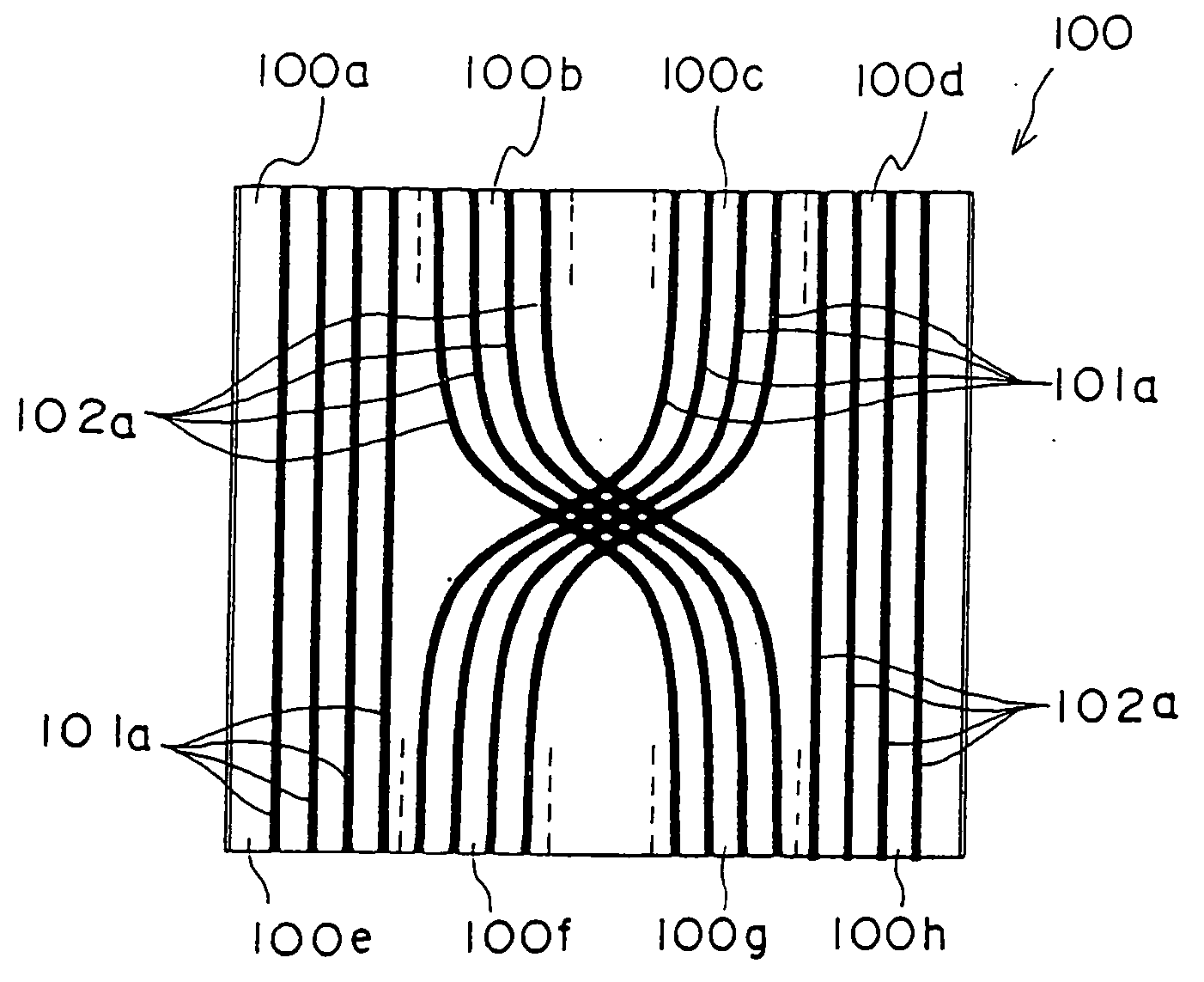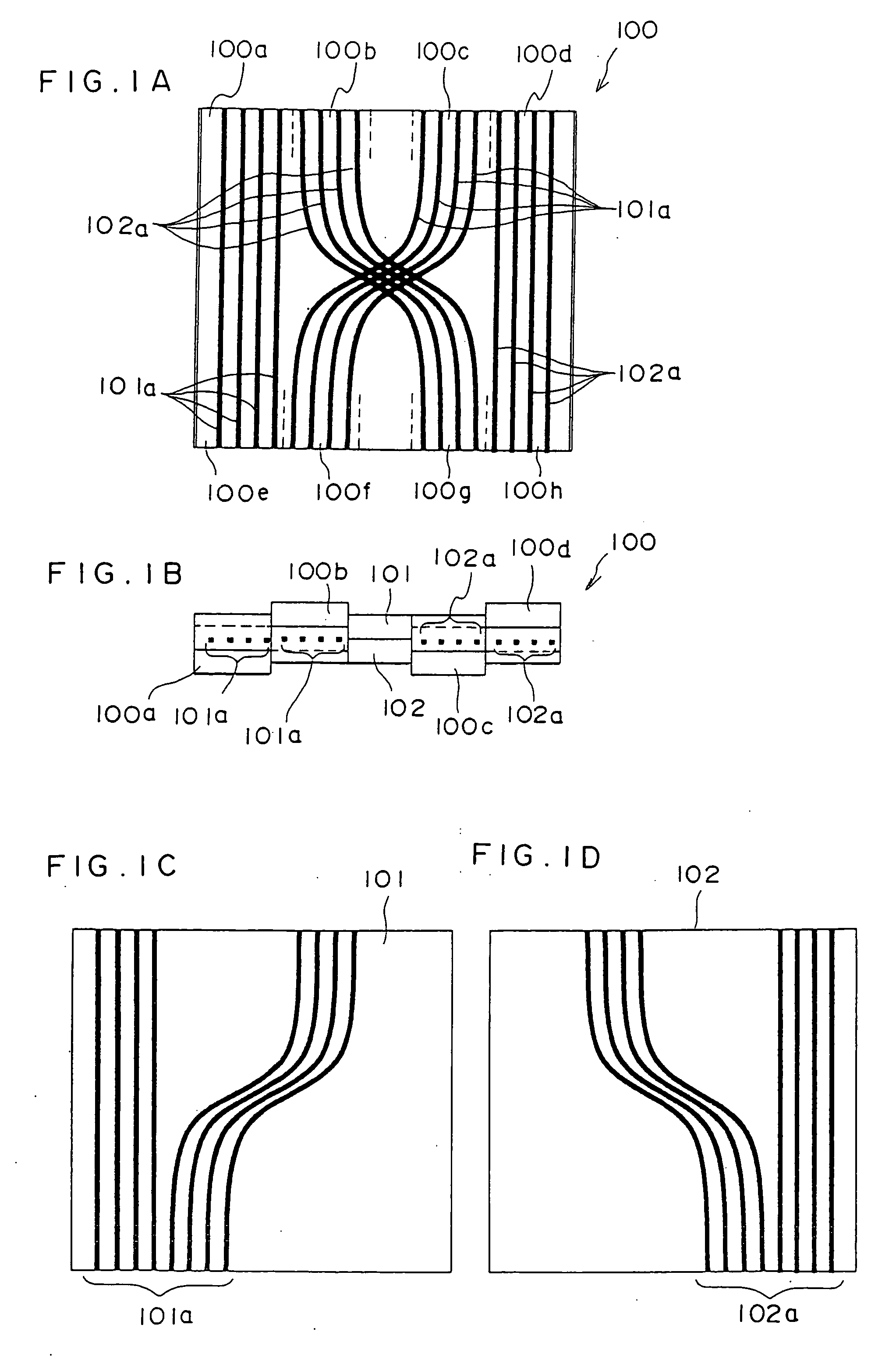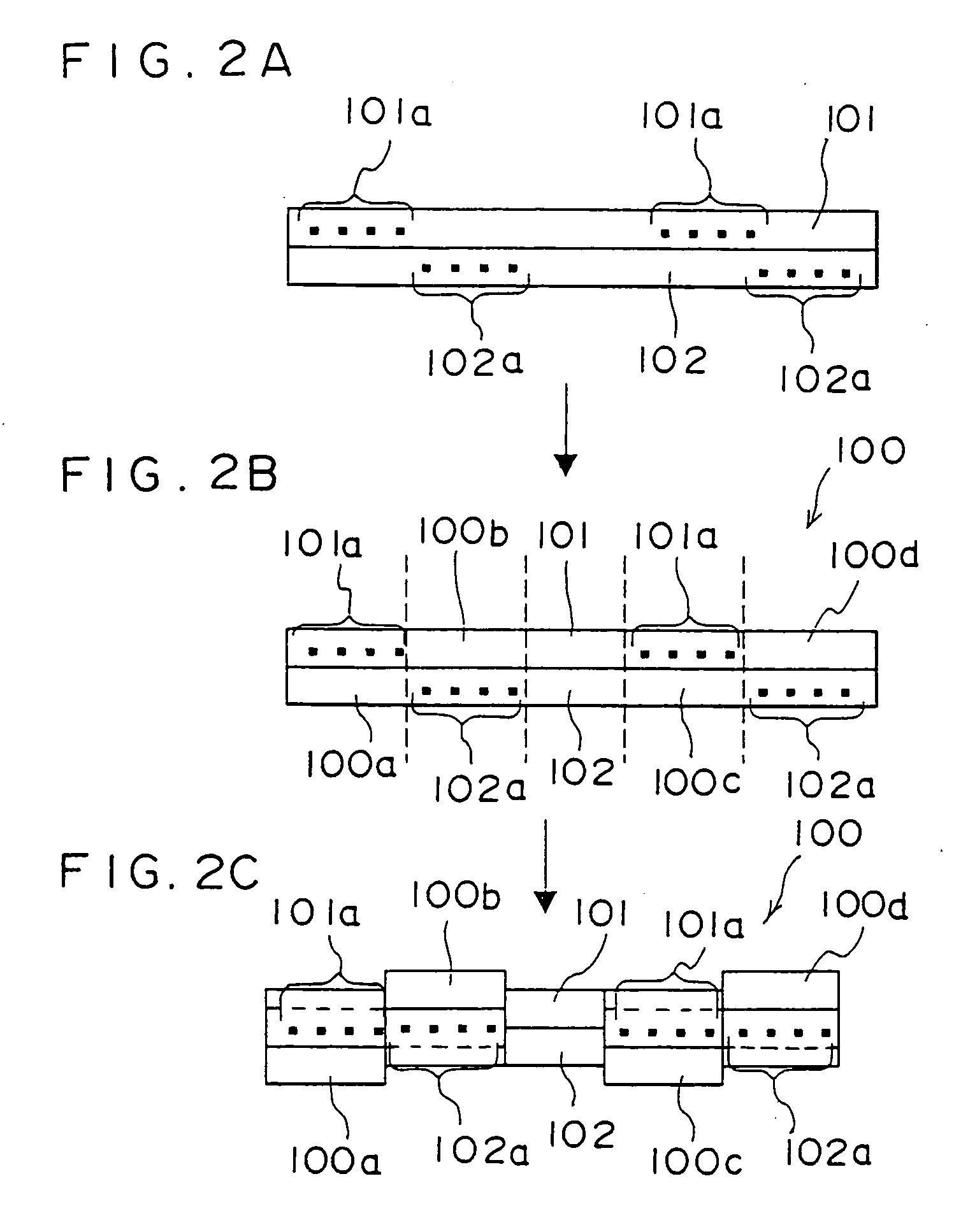Laminated polymer optical waveguide and process for producing the same
a technology of laser-cutting polymer and optical waveguide, which is applied in the direction of optical waveguide light guide, instruments, applications, etc., can solve the problems of poor cost performance, inability to obtain sufficient difference in refractive index between the core layer and the clad layer, and poor accuracy of a core diameter. , to achieve the effect of reducing connection loss, facilitating positioning, and reducing cos
- Summary
- Abstract
- Description
- Claims
- Application Information
AI Technical Summary
Benefits of technology
Problems solved by technology
Method used
Image
Examples
example 1
[0143]
[0144] A thick film resist (SU-8, manufactured by MicroChem Corp.) is applied onto a Si substrate by spin coating, and then the resultant is pre-baked at 80° C., exposed to light through a photomask and developed to form the following: eight convex portions (width: 50 μm, height: 50 μm, length: 50 mm, and adjacent portion pitch: 250 μm), for optical waveguide cores, which each have a square section, as illustrated in FIGS. 1C and 1D; and non-illustrated convex portions (width: 50 μm, height: 50 μm, and length of each side: 2 mm), for alignment marks, which have two square planar sections. Next, this is post-baked at 120° C. to form a master plate for forming optical waveguide cores.
[0145]
[0146] Next, a releasing agent is applied onto this master plate and then a heat-curable dimethylsiloxane resin (SYLGRD 184, manufactured by Dow Corning Asia Ltd.) is poured into this master plate and heated at 120° C. for 30 minutes to be solidified. The resin is then removed as a mold (thic...
example 2
[0154] A master plate and a PDMS mold are first formed in the same way as in Example 1.
[0155]
[0156] The mold and a light-transmissive clad film (Arton film, manufactured by JSR Corp., refractive index: 1.510) of 188 μm design film thickness wherein unnecessary portions are cut off as illustrated in FIGS. 2A and 2B are prepared. The light-transmissive clad film and the mold are brought into close contact with each other. Next, several droplets of an ultraviolet ray-curable resin (PJ3001, manufactured by JSR Corp.) having a viscosity of 1300 mPa·s are dropped into the hole at one end of each of the optical waveguide core concave portions formed in the mold. The air is sucked from the other end at a sucking power of 20 kPa by means of a diaphragm type sucking pump (maximum sucking pressure: 33.25 kPa). As a result, the ultraviolet ray-curable resin is filled into each of the concave portions. Next, UV rays having an energy of 50 mW / cm2 are radiated onto the ultraviolet ray-curable res...
PUM
 Login to View More
Login to View More Abstract
Description
Claims
Application Information
 Login to View More
Login to View More - R&D
- Intellectual Property
- Life Sciences
- Materials
- Tech Scout
- Unparalleled Data Quality
- Higher Quality Content
- 60% Fewer Hallucinations
Browse by: Latest US Patents, China's latest patents, Technical Efficacy Thesaurus, Application Domain, Technology Topic, Popular Technical Reports.
© 2025 PatSnap. All rights reserved.Legal|Privacy policy|Modern Slavery Act Transparency Statement|Sitemap|About US| Contact US: help@patsnap.com



